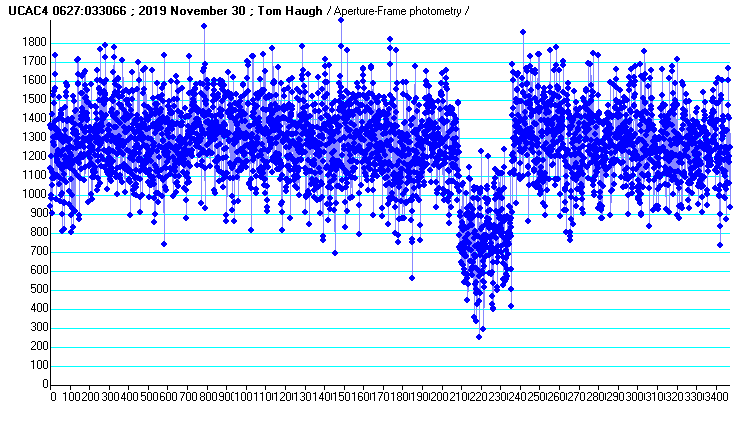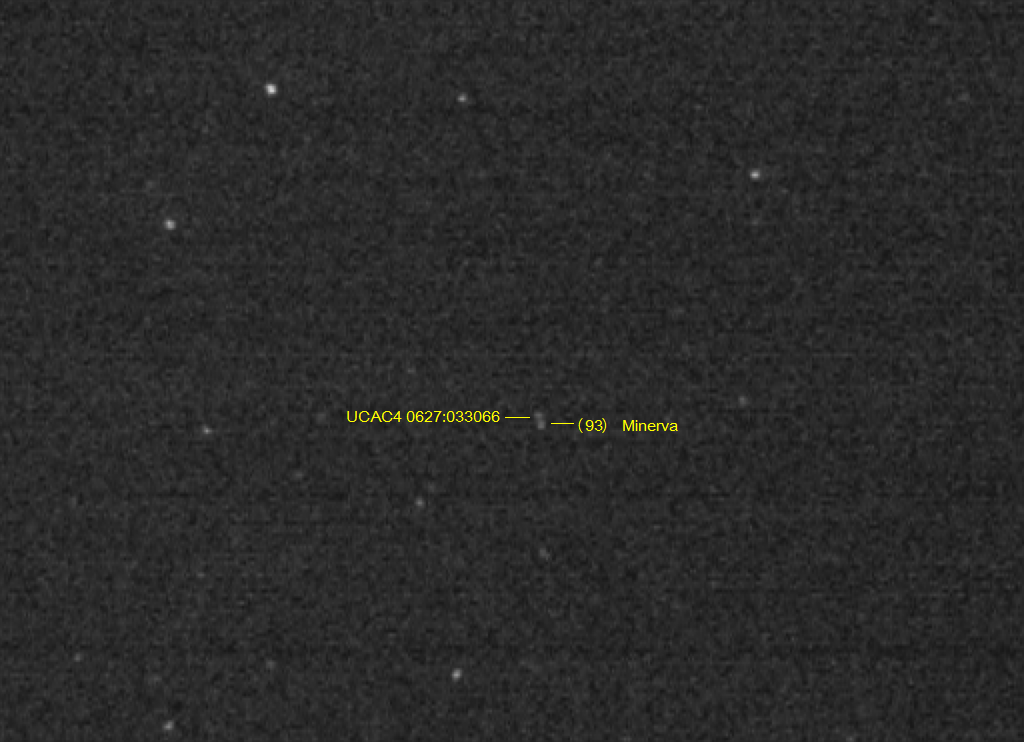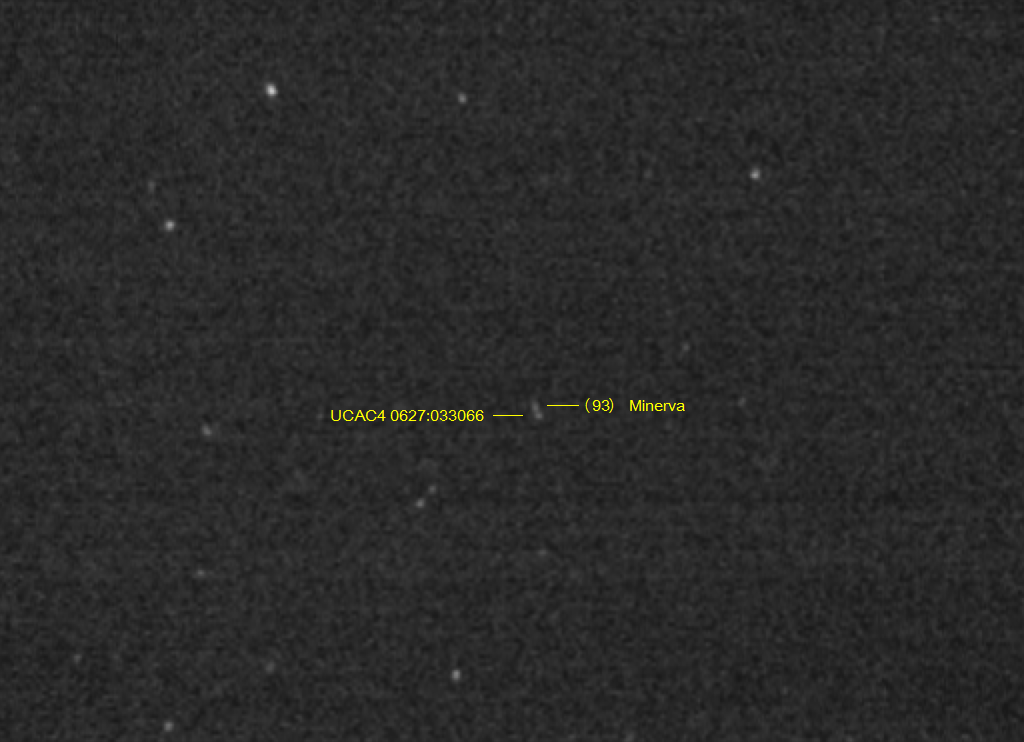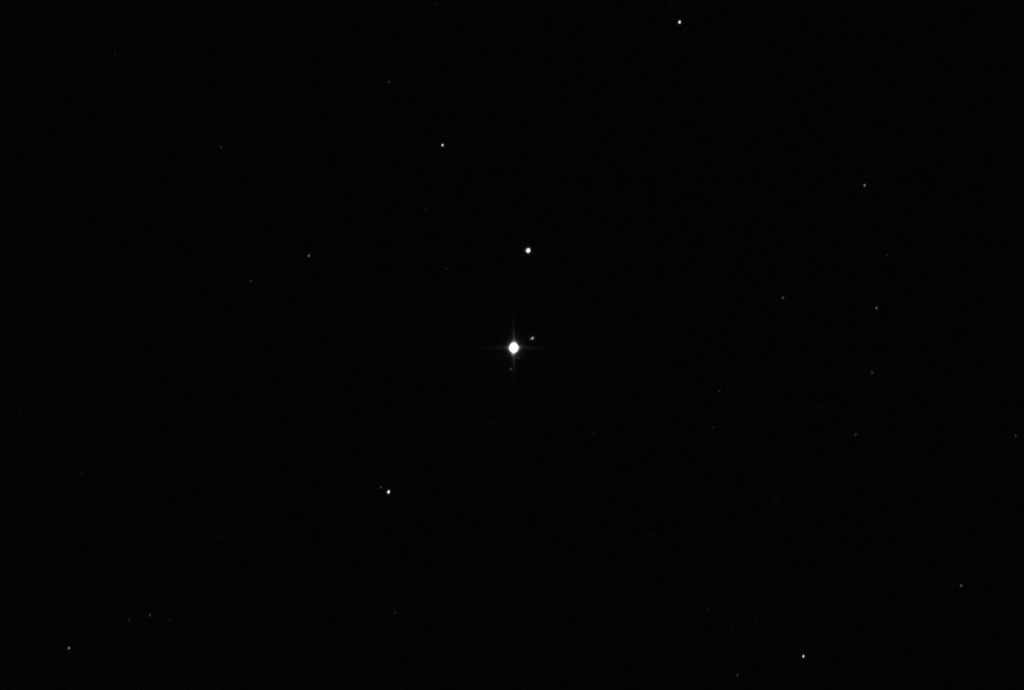Asteroid (93) Minerva, named after the Roman goddess of wisdom and strategic warfare, cast a shadow across the Earth very early on the morning of the 30th of November. As the shadow crossed the US it passed directly over the PTO. The source of the light blocked by Minerva was star UCAC4 0627:033066. The ‘telescope’ icons on the map of the shadow’s path show two other sites attempting to monitor the occultation.
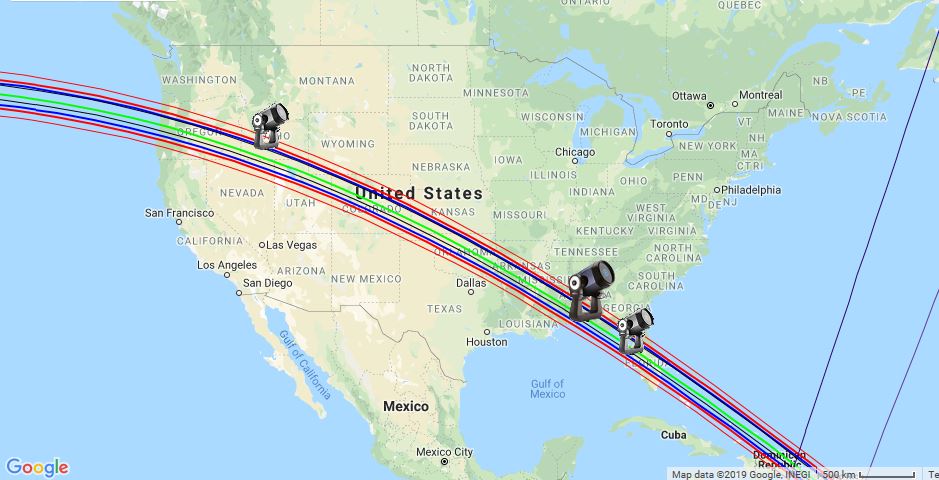
These are two frames from the series of videos taken throughout the predicted time. The frames are 26 minutes before and 26 minutes after the event.
Once the asteroid and star are close enough, their light combines into one point. If the asteroid and the observer are exactly where they are supposed to be, the asteroid will totally block the stars light. If the asteroid is bright enough, the asteroid’s light is all that will be visible. That is what happened on the 30th. If the asteroid is not very bright the star will simply disappear. By measuring the brightness of the combined objects continuously throughout the event the diameter of the asteroid can be determined. Previous occultations of Minerva have established an estimated mean diameter of 150 kilometers (93 miles). This chart shows the brightness measured during the event. The drop in brightness, when only the asteroid’s light is visible, is obvious.
